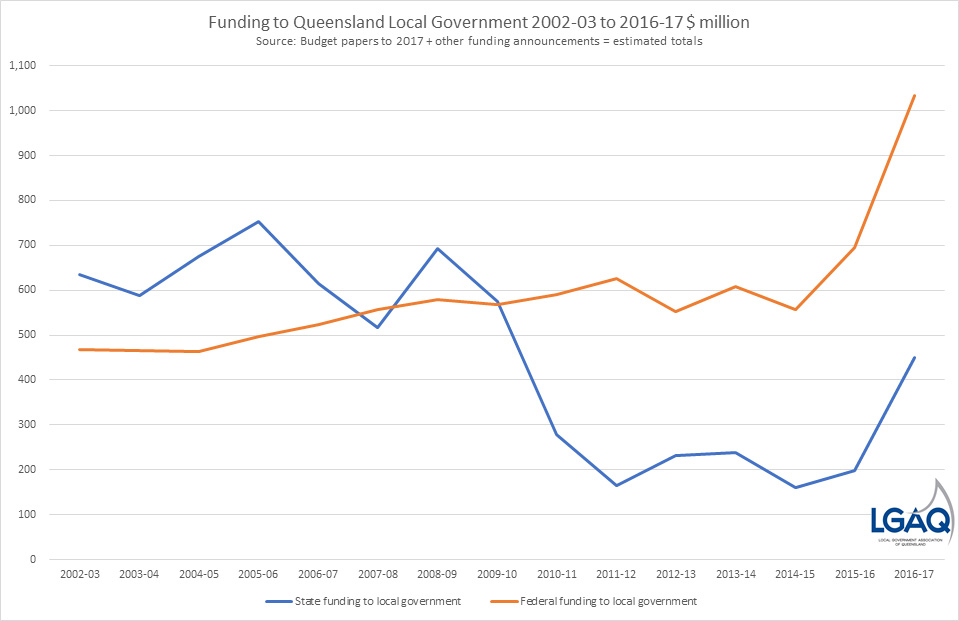By LGAQ President and Sunshine Coast Council Mayor, Mark Jamieson
This article is from the April/May edition of the Council Leader Magazine. If you would like to receive a copy please contact us or read it online here.
This year’s Federal Budget provides a great opportunity for local governments to ensure the communities they represent receive their fair share of support from Canberra.
Take a look at the graph on this page. It shows how important Federal funding has become to Queensland councils, particularly over the past decade.
The LGAQ has made a conscious decision to spend more time and resources in ensuring all sides of politics in the Federal Parliament understand our funding and policy reform priorities and advocate for better outcomes for our member councils.

Some of the reforms we are pushing would be familiar to many. Restoring financial assistance grants to the equivalent of 1 percent of Commonwealth revenue has been - and remains - a central goal of Queensland councils and, indeed, the entire local government sector. **Please note this graph is a correction on the print version of the magazine.**
The last time FA Grants were at that proportion was in 1996. Over the past decade, the proportional value of FA Grants contributions from the Commonwealth have declined by nearly 50 percent in relative terms.
A Local Freight Productivity Investment Plan is another priority we are advocating with the Commonwealth, centred on a commitment we are seeking of $200 million a year over the next five years to finally improve the chances of proper transport connectivity that is targeted at boosting the performance of the national economy. I’m talking here about the need to fix the so-called “first and last mile” of our transport network. Investing in national and state highways is one thing, but the productivity benefits will not be realised until the local roads at the ends of these high-volume arteries are improved as well. The need for freight companies to shuttle trailers back and forth from warehouses on local roads to some point on the national network where they can be reassembled into bigger B-doubles and B-triples shows a fundamental inefficiency in the system.
Another aspect of improving connectivity is, of course, in telecommunications.
While the Federal Government has invested some resources into improving mobile black spots, this is only solving part of the puzzle. That is why we are backing the Australian Local Government Association’s (ALGA’s) call for the Budget to fund a Digital Local Government and Rural/Regional Telecommunications Program of $100 million for four years to increase the community benefits of improved connectivity, coverage mapping, technology and innovation.
Other features of ALGA’s federal Budget submission that are important to Queensland councils include a call for a significant investment in ensuring that community infrastructure is able to withstand natural disasters. We believe an investment in a targeted disaster mitigation program of at least $200 million a year is needed to reduce the cost to councils and their communities of disasters.
One item in ALGA’s submission I was particularly keen to include is its call on the Federal Government to invest at least $5.5 billion over the next decade to support a new National Partnership Agreement on Remote Indigenous Housing.
The existing agreement ends on 30 June and, at the time of going to press, the Turnbull Government had given every indication that it would walk away from such support. That is a short-sighted decision that has the potential to undermine many of the improved outcomes that the existing agreement has underpinned in Queensland’s Indigenous communities. Let’s hope common sense prevails in the Budget.